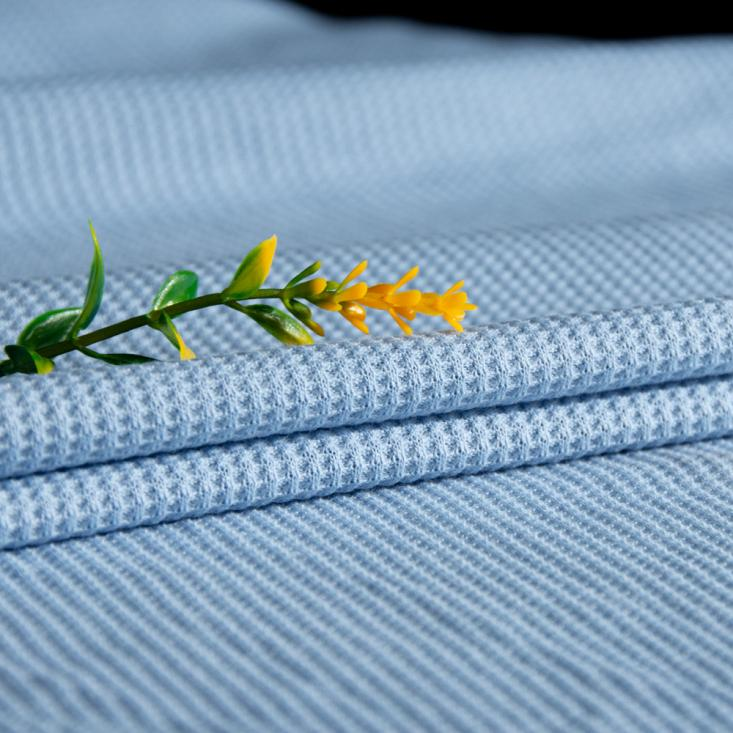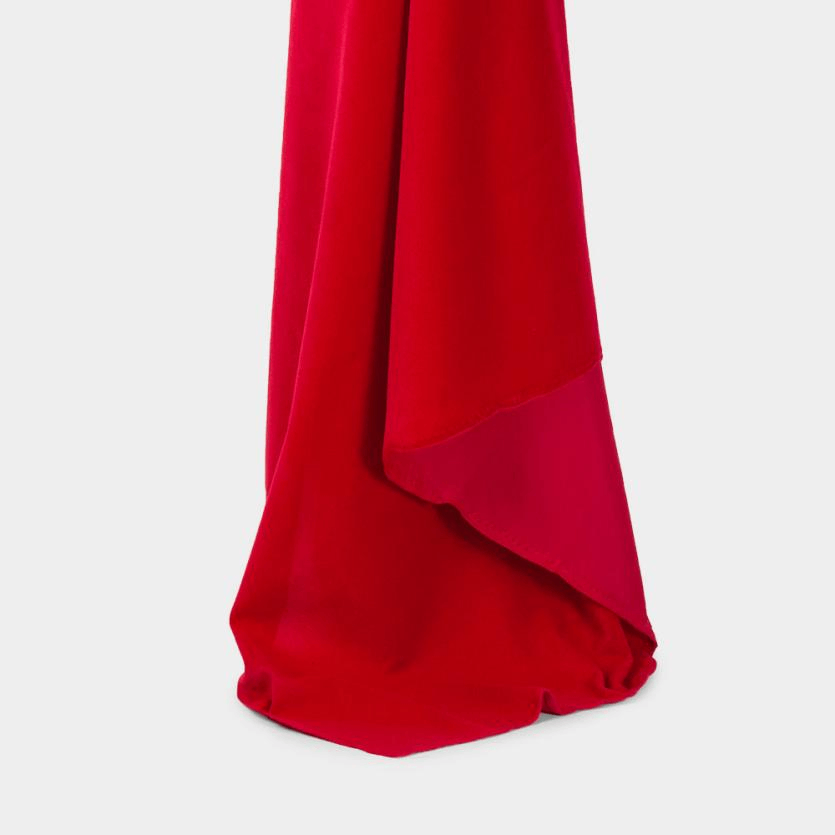Entre em contato
Obrigado por entrar em contato! tel-nos mais sobre suas necessidades — nossa equipe de especialistas entrará em contato com você em até 24 horas.
Entre em contato
Obrigado por entrar em contato! tel-nos mais sobre suas necessidades — nossa equipe de especialistas entrará em contato com você em até 24 horas.
Os tecidos resistentes a chamas tornaram-se um elemento essencial em diversos setores, como têxteis para o lar, cama, eventos, medicina, vestuário, indústria, decoração de interiores, arquitetura e hotelaria, graças à sua capacidade de reduzir as chances de incêndio e aumentar a segurança. O crescente reconhecimento dos riscos de incêndio ressaltou a importância de produtores e consumidores compreenderem as características e vantagens desses tecidos. Com a expansão do mercado de tecidos resistentes a chamas, é fundamental considerar esses fatores ao escolher opções de alta qualidade que atendam às normas de segurança e ofereçam durabilidade e resistência.
Tecido resistente a chamas É um material que foi especialmente tratado ou projetado para evitar que pegue fogo, retardar a propagação das chamas e diminuir a quantidade de calor liberada ao entrar em contato com o fogo. Esse tipo de tecido é crucial para proteger pessoas e bens contra riscos de incêndio. Em setores onde o risco de incêndio é alto, o uso de tecido antichamas pode oferecer proteção extra e garantir a conformidade com as normas de segurança.

A história da criação de tecidos resistentes a chamas remonta a meados do século XX, quando a demanda por materiais para diferentes usos se tornou evidente. Inicialmente, os tratamentos se concentravam principalmente na aplicação de produtos químicos para impedir a propagação das chamas em superfícies. Com o passar do tempo, os avanços tecnológicos possibilitaram a introdução de materiais com propriedades retardantes de chamas. Recentemente, tem havido uma tendência de incorporar aditivos ecológicos para aumentar a sustentabilidade desses produtos, alinhando-se a iniciativas voltadas para a redução das emissões de carbono.
Na área de segurança contra incêndio, os tecidos tratados para resistir às chamas devem atender a requisitos e certificações que garantam sua confiabilidade. Diversas organizações e autoridades estabelecem normas que ditam como esses materiais são testados e classificados. Por exemplo, os tecidos podem ser obrigados a atender a diretrizes como NFPA 701, CA117 e CFR 1615. Essas certificações asseguram que os tecidos foram avaliados minuciosamente, confirmando sua capacidade de resistir ao fogo e dando aos consumidores segurança em suas escolhas.
A composição de um tecido retardante de chamas é um indicador fundamental de sua qualidade. Tecidos de alta qualidade geralmente incorporam materiais sintéticos avançados que são tratados com produtos químicos retardantes de chamas ou fabricados com propriedades intrínsecas de resistência ao fogo. O uso de materiais como.. aramida, fibra de vidro, nylon ou acrílico A combinação com aditivos retardantes de chama pode melhorar significativamente o desempenho do material. Além disso, alguns materiais são feitos de 100% algodão, 100% viscose ou 100% poliéster. Além disso, detalhes como a espessura do tecido, a cobertura dos tratamentos retardantes de chamas e a presença de inibidores de UV também contribuem para a eficácia geral do tecido em diferentes condições ambientais.
A durabilidade é outro fator crítico na seleção de tecidos retardantes de chamas de alta qualidade. A durabilidade retardante de chamas deste material é excelente, e o efeito retardante de chamas não é afetado por mais de 50 lavagens com água. O tecido também deve resistir a agressões ambientais, como a exposição aos raios UV, sem degradar suas propriedades retardantes de chamas. Tecidos reforçados com elementos adicionais geralmente oferecem maior durabilidade. Um fornecedor confiável, como a BEGOODTEX, garante testes rigorosos de seus produtos antes da entrega, dando aos consumidores confiança em seu investimento em produtos de segurança.
Em conclusão, compreender os fatores críticos para a seleção de tecidos retardantes de chamas de alta qualidade é crucial para garantir a segurança e o bem-estar das pessoas em diversos ambientes. Avaliar a composição e a durabilidade do material permite que os consumidores façam escolhas informadas que estejam alinhadas às suas necessidades específicas e aos requisitos regulamentares. Empresas como a BEGOODTEX estão na vanguarda dessa tecnologia, fornecendo soluções inovadoras para atender às demandas de um mercado preocupado com a segurança.
Ao selecionar um tecido retardante de chamas de alta qualidade, é essencial avaliar a experiência do fabricante no setor. Uma empresa com longa trajetória no mercado geralmente traz consigo conhecimento valioso tanto em técnicas de produção quanto em conformidade com as normas de segurança. Esses fabricantes têm maior probabilidade de ter aprimorado seus processos, testado seus tecidos em diversos cenários e construído uma reputação de confiabilidade entre os compradores. Além disso, fabricantes experientes tendem a estar familiarizados com os vários desafios de diferentes setores, o que lhes permite oferecer soluções personalizadas que atendem a diversas necessidades.
Para avaliar a credibilidade de um fabricante, é igualmente importante compreender seus procedimentos de certificação e teste. Fabricantes de qualidade investem em testes rigorosos para garantir que seus tecidos retardantes de chamas atendam às normas de segurança aplicáveis. Isso pode incluir testes de inflamabilidade de acordo com padrões como CAN/ULC-S109-14 e a avaliação da eficácia dos aditivos retardantes de chamas incorporados ao tecido. As certificações de órgãos reconhecidos não apenas garantem a conformidade, mas também tranquilizam os consumidores, demonstrando que os produtos foram submetidos a avaliações abrangentes e são capazes de funcionar sob condições extremas. Além disso, fabricantes transparentes em relação aos seus processos de teste tendem a construir maior confiança com seustel.
As avaliações e o feedback dos clientes são indicadores cruciais da credibilidade dos fabricantes. Depoimentos positivos refletem o nível de satisfação dos clientes em relação à qualidade do material, ao desempenho em segurança e à capacidade de resposta às solicitações de serviço. Ao analisar as experiências dos clientes, os potenciais compradores podem avaliar a consistência do fabricante no fornecimento de tecidos retardantes de chamas de alta qualidade. Interagir com o feedback dos clientes, seja por meio de consultas diretas ou plataformas dedicadas a avaliações de produtos, pode fornecer informações adicionais sobre a reputação do fabricante e seu compromisso geral com a qualidade no setor.
No setor têxtil para o lar, esses tecidos oferecem uma solução confiável para garantir a segurança contra incêndio em cortinas e decorações. As propriedades inerentes de retardamento de chamas dos tecidos os tornam adequados para uso em ambientes que exigem medidas rigorosas de segurança contra incêndio.
Na área médica, os tecidos BEGOODTEX oferecem uma opção durável e retardante de chamas para mobiliário hospitalar e revestimento de equipamentos. Esses tecidos foram testados e validados quanto às suas propriedades retardantes de chamas, atendendo aos requisitos das normas NFPA 701:2019.
Na indústria de vestuário, os tecidos BEGOODTEX atendem ou superam os padrões locais de segurança contra incêndio. Podem ser utilizados na produção de roupas de proteção, garantindo a segurança dos trabalhadores em ambientes de alto risco. Com sua durabilidade e capacidade de impedir a propagação de chamas, os tecidos retardantes de chamas BEGOODTEX são uma escolha confiável em diversos setores.
Os tecidos retardantes de chamas desempenham um papel fundamental na produção de equipamentos de segurança e proteção, especialmente em setores de alto risco, como combate a incêndios, petróleo e gás, manufatura e outros. A escolha do tecido impacta diretamente o nível de proteção oferecido aos profissionais que operam em condições perigosas. Por exemplo, as vestimentas destinadas a proteger os trabalhadores contra incêndios e riscos térmicos devem não apenas oferecer resistência às chamas, mas também permitir respirabilidade e conforto durante o uso. Selecionar um fabricante como a BEGOODTEX, que prioriza tanto as especificações de segurança quanto o design ergonômico das vestimentas de proteção, garante que os usuários finais não precisem abrir mão da segurança, mantendo o conforto no trabalho. Além disso, no segmento de bagagens, existem itens com acabamento retardante de chamas, como.. barraca de acampamento à prova de fogo Feito de lona de poliéster retardante de chamas.

As fibras naturais, como o algodão ou a lã, são inerentemente menos inflamáveis em comparação com as opções sintéticas, o que pode ser vantajoso em muitas aplicações. Quando tratadas adequadamente com produtos químicos retardantes de chamas, essas fibras podem oferecer proteção eficaz contra incêndios, mantendo sua respirabilidade e conforto. Além disso, as fibras naturais tendem a ter um toque mais macio, contribuindo para o conforto geral do produto final, o que é essencial em aplicações como vestuário de proteção e estofados. Ademais, as fibras naturais são frequentemente biodegradáveis e sustentáveis, atraindo consumidores com consciência ambiental que priorizam materiais ecológicos em suas decisões de compra.

Fibras artificiais como poliéster e náilon tornaram-se populares devido à sua durabilidade e capacidade de resistir a fatores externos quando tratadas com métodos retardantes de chamas. Por exemplo, nylon fabrics Podem ser adaptados para usos específicos, permitindo que os fabricantes aprimorem qualidades como resistência ao desgaste, proteção contra raios UV e absorção de umidade. Consequentemente, os materiais sintéticos retardantes de chamas frequentemente superam os tecidos em termos de durabilidade em diversas condições, especialmente em ambientes industriais. Além disso, os avanços na criação de fibras resultaram na invenção de aditivos retardantes de chamas que aumentam a segurança sem comprometer a resistência ou o desempenho do material. Tomando como exemplo o BEGOODTEX.. tecido de flanelaO tecido Loop Fleece, feito de poliéster, seria a escolha perfeita para você.
A BEGOODTEX utiliza métodos de fabricação de ponta que se concentram em incorporar características retardantes de chamas na fibra. Esse método não só aumenta a capacidade do tecido de resistir ao fogo, como também garante o desempenho ao longo da vida útil do produto. Ao empregar técnicas de tecelagem e tricô, a BEGOODTEX cria estruturas tecidas que aprimoram a resistência geral ao fogo. Esses métodos também reduzem o risco de lixiviação química, preservando as propriedades retardantes de chamas após a lavagem ou exposição a diversos elementos.
Garantir a segurança é fundamental ao lidar com tecidos resistentes ao fogo. Por isso, a BEGOODTEX segue protocolos de teste rigorosos, em conformidade com as normas globais de segurança. Cada lote de tecido passa por um processo de inspeção, incluindo avaliações de inflamabilidade de acordo com as diretrizes EN13501-1 e EN 13773 Classe 1. Esse procedimento de teste rigoroso valida a eficácia dos tratamentos retardantes de chamas e garante que os tecidos atendam aos padrões de segurança estabelecidos. Graças a esses procedimentos, os consumidores podem confiar que os tecidos resistentes ao fogo da BEGOODTEX são avaliados e certificados quanto à qualidade e segurança.
A BEGOODTEX dedica-se a aprimorar suas opções de tecidos resistentes ao fogo, com foco na sustentabilidade. A empresa explora ativamente o uso de materiais reciclados e aditivos ecológicos em seus processos de produção, o que ajuda a reduzir o impacto da fabricação do tecido. Ao adotar essas práticas, a BEGOODTEX alinha-se à tendência de métodos de produção e fornecimento ecologicamente corretos.